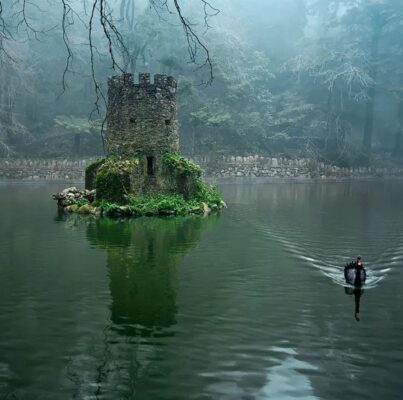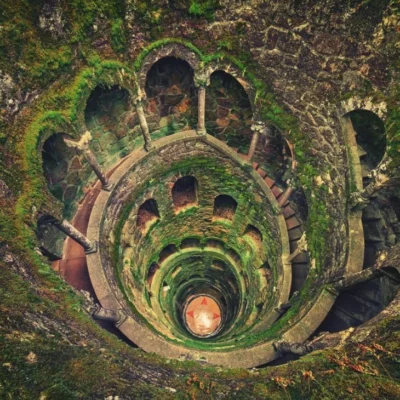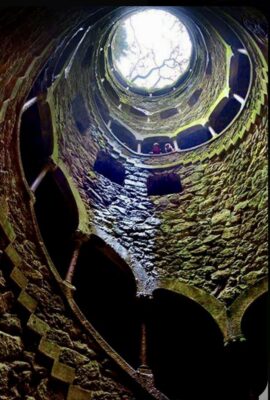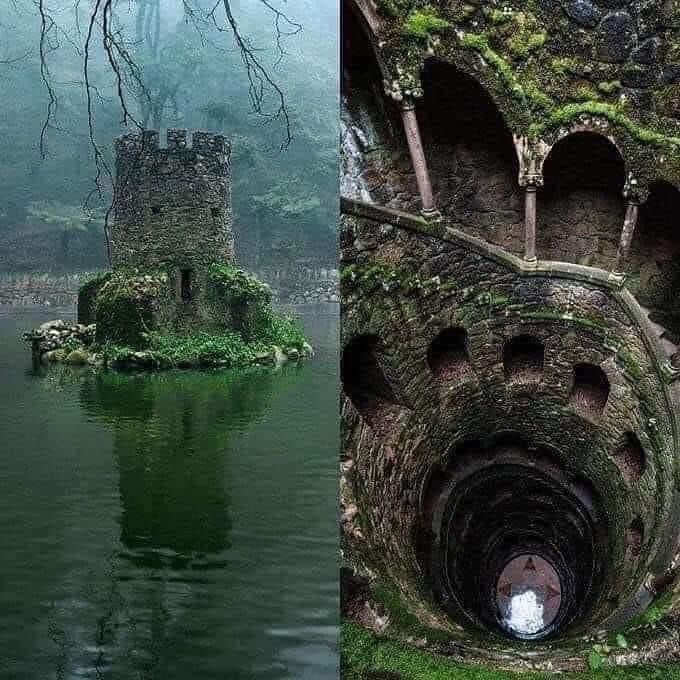Nestled in the lush forests of Sintra, Portugal, the Swamp Tower of Pena Palace stands as one of the most intriguing and lesser-known features of this iconic landmark. A hidden gem in the heart of the palace’s expansive grounds, this mysterious tower offers visitors a unique perspective on the history and architectural marvels of the palace. Follow archeology.dulichvn.net to discover many hidden mysteries that have yet to be discovered.

A Historical Marvel in Pena Palace
The Origins of the Swamp Tower
The Swamp Tower, part of the Pena Palace complex, dates back to the 19th century, a time when the palace was transformed from a former monastery into a royal residence. The tower was designed as a decorative structure, in line with the eclectic and whimsical style that characterizes Pena Palace.
The Role of the Swamp Tower
While its primary function was decorative, the Swamp Tower’s role in the grand scheme of the palace was to enhance the visual appeal of the surrounding landscape. Its position overlooking the surrounding swamps and forests allowed it to blend seamlessly with the natural beauty of Sintra.
A Hidden Treasure for History Lovers
Unlike the main areas of Pena Palace, the Swamp Tower often escapes the attention of casual visitors. However, for those who venture deeper into the palace grounds, it presents a fascinating opportunity to explore an architectural relic that played a unique role in the history of the palace and the region.

Architectural Beauty and Design Swamp Tower of Pena Palace
A Unique Architectural Feature
The Swamp Tower’s design reflects the eclectic style of Pena Palace, which combines elements of Gothic, Renaissance, and Moorish architecture. Its whimsical appearance, with decorative arches and intricate details, stands out as a testament to the creativity and vision of the palace’s designer, King Ferdinand II.
Integration with Nature
One of the most striking aspects of the Swamp Tower is how it blends with the surrounding natural environment. Positioned near a lake, it provides stunning views of the lush greenery and forests that characterize the Sintra mountains. This harmonious integration of architecture and nature is one of the defining features of Pena Palace as a whole.
A Journey Through Time
As visitors explore the Swamp Tower, they are transported back in time, experiencing the fusion of art, nature, and history that has made Pena Palace one of the most important and picturesque landmarks in Portugal.

The Swamp Tower’s Mystique Today
A Tranquil Escape
The Swamp Tower offers a quiet escape from the crowds that typically gather around the main areas of Pena Palace. With its isolated location, the tower is an ideal spot for visitors seeking a more serene and reflective experience amidst the palace’s captivating scenery.
Unveiling Hidden History
For those interested in history, the Swamp Tower provides a glimpse into the lesser-known aspects of Pena Palace’s past. Its enigmatic presence adds to the intrigue surrounding the palace, making it a must-see for those wanting to explore every corner of this fascinating monument.
A Photographer’s Dream
The striking contrast between the Swamp Tower and its natural surroundings makes it a popular spot for photographers. Its towering presence against the backdrop of lush greenery and serene waters provides a perfect opportunity to capture the beauty and mystery of Pena Palace from a unique angle.
See more: The Opening of the Eiffel Tower: A Landmark Moment in History
Conclusion: The Swamp Tower’s Timeless Appeal
The Swamp Tower of Pena Palace is more than just a hidden feature within the palace grounds. It is a testament to the vision of its creators and a symbol of the harmonious relationship between architecture and nature. For those willing to seek it out, the tower offers an unforgettable journey through time and a deeper understanding of the rich history that makes Pena Palace a true treasure of Portugal.


CÁC TIN KHÁC
Mark Twain & Olivia Langdon: A 36-Year Love Story Filled with Laughter and Devotion
The Tollund Man: A 2,400-Year-Old Mystery Preserved in a Danish Bog
Skara Brae: Scotland’s Hidden Neolithic Village
Porta Nigra: The Hidden Depths of Trier’s Iconic Roman Gate